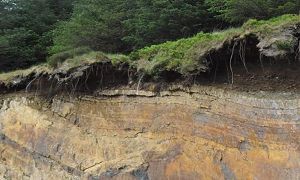CZ Science 7. Humans in the Critical Zone
Grades 15 -
16
GIS/RemoteSensing • SocialScience
Curriculum
Educational Objectives
By the end of this module students will be able to:
- Develop scientific and geoscientific habits of mind through geospatial environmental analysis.
- Identify, interpret and develop mediation techniques to address human impacts to the Critical Zone.
- Identify and explain the impacts of various methods of agricultural production on soils.
- Critically examine research proposals and describe how the proposal would address CZ questions and grand challenges.
More on this module's objectives can be found here.
Audience
Higher Education
Observatory: National CZO
Author(s): Susan Gill (Stroud Water Research Center), Ashlee Dere (University of Nebraska - Omaha), and Jim Washburne (Pima Community College and University of Arizona)
Contact(s):
Funding: National Science Foundation–funded SERC InTeGrate project
Related Resource(s):
- CZ Science 0. Undergrad course (7 modules)
- CZ Science 1. Critical Zone background
- CZ Science 2. Methods of Critical Zone Science
- CZ Science 3. Critical Zone architecture & evolution
- CZ Science 4. Land-atmosphere exchange
- CZ Science 5. Water transfer through the Critical Zone
- CZ Science 6. Geochemistry & biogeochemistry
Details for this Resource
The unit will include exercises that ask students to develop and implement strategies to address anthropogenic environmental impacts while also considering impacts to communities. Specifically, it will look at issues such as land-use change, access to potable water and universal access to food. In so doing, the unit will specifically address the human impacts on water availability and food supplies.
- Unit 7.1: Watershed Modeling (Generic Model) (Two 75 min class sessions)
- Unit 7.2: Humans and Agriculture in the Critical Zone (One 75 min class session)
- Unit 7.3: Proposal Panel Review (One 75 class session)
Explore Further




